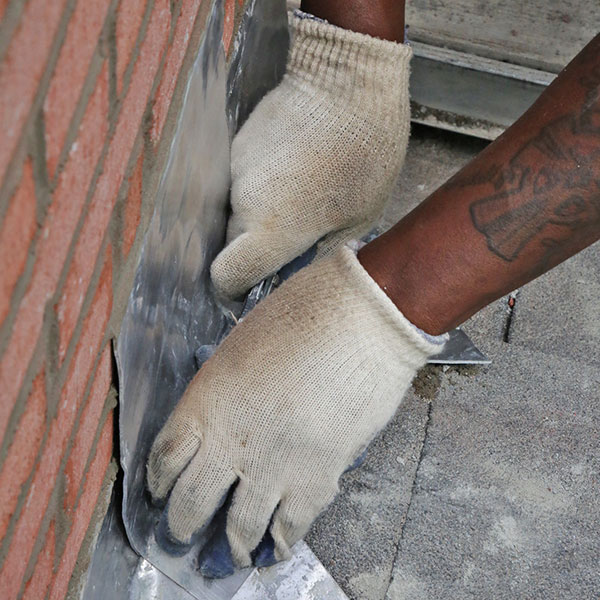- PENSACOLA SHOWROOM: 7555 Highway 98 West, Suite A, Pensacola, FL 32506
- DESTIN SHOWROOM: 36054 Emerald Coast Pkwy #100, Destin, FL 32541
The chief purpose of a chimney is to provide a drafting channel for smoke and gases created during a fire. But a quick look at many of the components and building processes of a chimney will tell you that much of what you see is there to prevent water from getting into the system.
A damp chimney is a sign that water is somehow moving in. This problem won’t reverse itself and needs to be addressed sooner rather than later. Doodlebuggers Fireplace, Grill & Outdoor Store of Pensacola, FL, and Destin, FL, would like to share some important information about dealing with damp chimneys.
 How water from rain can enter a chimney system
How water from rain can enter a chimney systemHere are some of the common ways chimneys bring in water.
Through a damaged chimney cap: The chimney cap at the top of the chimney is designed to protect the open flue from incoming water. If it’s warped, rusted out, unseated or otherwise damaged, it needs to be repaired or replaced.
Through cracks in the chimney crown: The slab of concrete covering the top of the chimney is called the chimney crown. Cracks can happen in the concrete and worsen over time. This gives water a path to interior (and unseen) areas of your chimney structure.
Through damaged masonry: Cracked bricks and crumbling mortar are invitations for rain and melting snow. Once moisture has invaded the masonry, freeze-thaw cycles will cause it to expand and do further damage.
Through warped or unseated chimney flashing: Flashing is the material that seals the gap between the chimney and the roof. When warped, loose or dislodged, it can let water in and cause damage to the masonry of the chimney breast (the section below the roof line) as well as nearby parts of the home.
If you see any of these signs, have a chimney professional evaluate the situation with an inspection.
Damage we see in the field that starts with a leaky chimney includes:
The old saying, “An ounce of prevention is worth a pound of cure,” applies well to chimneys. Annual chimney inspections by an experienced technician will uncover early signs of problems and let you get them fixed quickly. Many leaky chimneys have been saved through timely inspection and repair.
 Chimney crews have a variety of methods for dealing with damp, leaky chimneys. For example:
Chimney crews have a variety of methods for dealing with damp, leaky chimneys. For example:
If your chimney is taking on water, call the chimney professionals at Doodlebuggers. We know why chimneys leak, and we know how to solve the problem the right way.
Reach a chimney expert today at (850) 477-1151 in Pensacola, FL, or at (850) 243-0154 in the Destin, FL, area. You can also get in touch with our handy contact form.